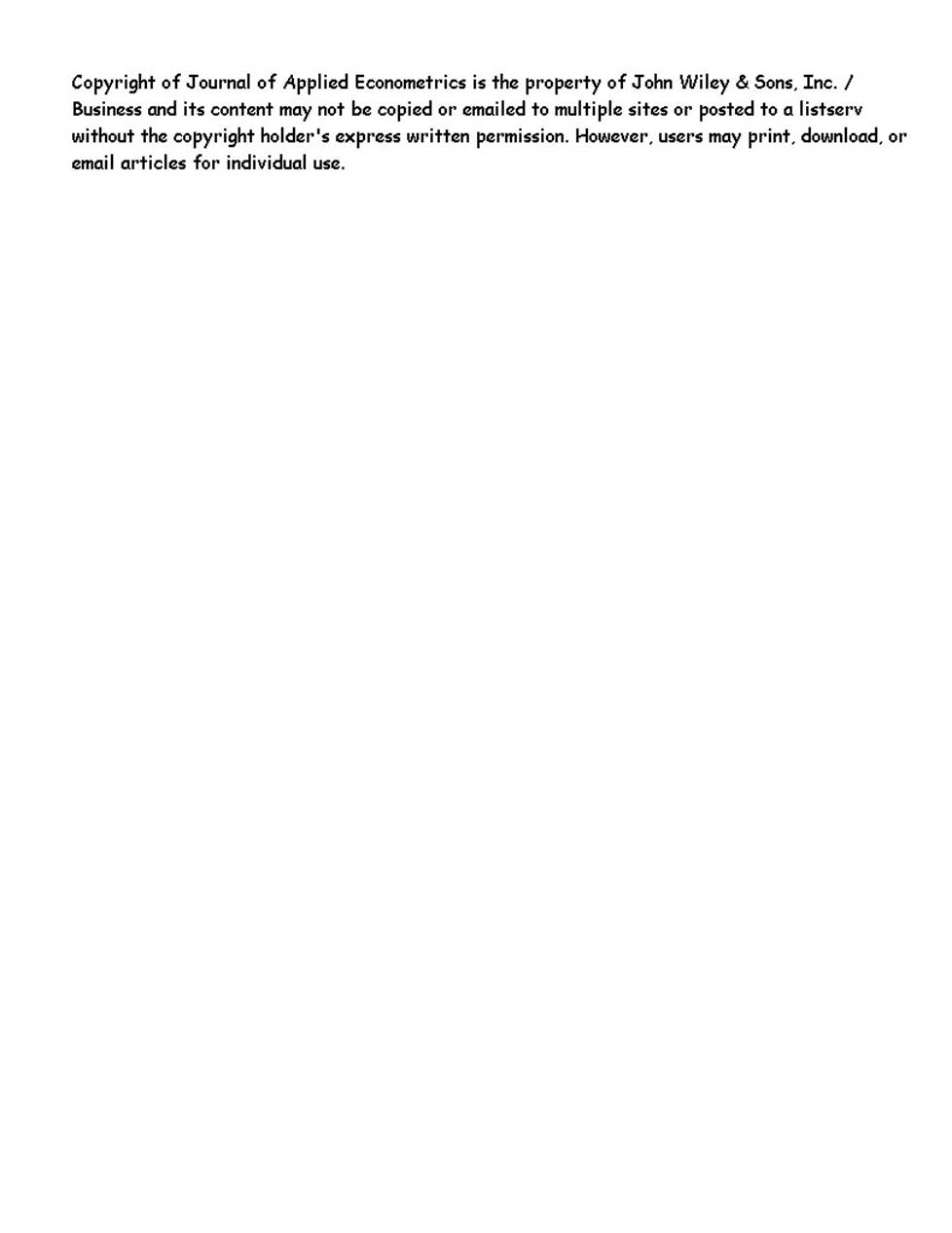Taylor MP, Peel DA. 2000. Nonlinear adjustment, long-run equilibrium and exchange rate fundamentals. Journal of International Money and Finance 19: 33–53.
Taylor MP, Peel DA, Sarno L. 2002. Nonlinear mean-reversion in real exchange rates: toward a solution to the purchasing power parity puzzles. International Economic Review 42: 1015–1042.
Taylor AM, Taylor MP. 2004. The purchasing power parity debate. Journal of Economic Perspectives 18: 135–158.


[1] See, for example, Bae et al. (2003) for further discussion.
[2] The commonly used benchmark is the level implied by the Purchasing Power Parity. In its relative version, this proposition states that the percentage change in nominal exchange rates should be equal to the inflation differentials (See Bleaney and Mizen, 1995, for a survey).
[3] See Kilian and Taylor (2001), Taylor et al. (2002) and Taylor and Taylor (2004) for further discussion and other possible sources of this asymmetry.
[4] Jorion (1988) points out that there are more jumps in the foreign exchange market than in stock markets.
[5] This is exactly the rationale behind the most popular technical trading rule—filter rules. Filter rules generate a ‘buy’ signal when a currency rises c% above its most recent trough; a ‘sell (short)’ signal when it falls by c% from the recent peak. Smaller filters capture turning points better but lead to more frequent trades and higher transaction costs. In contrast, larger filters result in less frequent trades and lower brokerage fees, but they miss the turning points by a larger amount.
[6] See Linton and Whang (2003) for the use of quantiles as a threshold in their study of directional predictability.
[7] There are several viewpoints about definition and evaluation categories of a successful intervention. For example, the monetary authorities, with a desire to reduce volatility rather than to maximize profit, attempt to smooth out changes in exchange rates and delay the adjustment to underlying fundamental forces by ‘leaning against the wind’. In such a circumstance, the success of intervention may be based on the ability to revert the direction of exchange rate movements. On the other hand, when the authorities need to support the current trend of foreign exchange rates, they are likely to focus on whether it helps move the foreign exchange rate in the same direction of the current movements—i.e., to ‘lean with the wind’ (see Dominguez and Frankel, 1993, for further discussion).
[8] Of course, subsamples testing, which is analogous to out-of-sample testing, could provide an interesting extension to our analysis, in view of potential structural changes in the data-generating process of foreign exchanges. We refer the interested reader to Alquist and Chinn (2006) for out-of-sample evaluation of foreign exchange rate modeling.
[9] As such, the findings for the UIP condition and, by inference, the forecastability of exchange rates appear to be sensitive to the forecast horizon. However, we do not explore this issue in this paper, since the sample sizes for long-horizon returns are not be large enough to ensure the comparability of test results across different time horizons. While our generalized cross-spectrum approach detects directional predictability well in finite samples (Hong and Chung, 2006), comparative analysis between the short (daily data with more than 3000 observations) and long (e.g., yearly data with fewer than 20 observations) horizons may lead to misleading inference.
[10] See also Flood and Jeanne (2000) and Flood and Rose (2002) for related discussion in the context of UIP. 11 A rejection of 0 in (4) is not necessarily an indication of a successful interest rate defense. Active interest rate defense can be costly under certain conditions, such as when interest rate hikes result in a further depreciation due to increased risk—the perverse effects (e.g., Furman and Stiglitz, 1998).
Уважаемый посетитель!
Чтобы распечатать файл, скачайте его (в формате Word).
Ссылка на скачивание - внизу страницы.